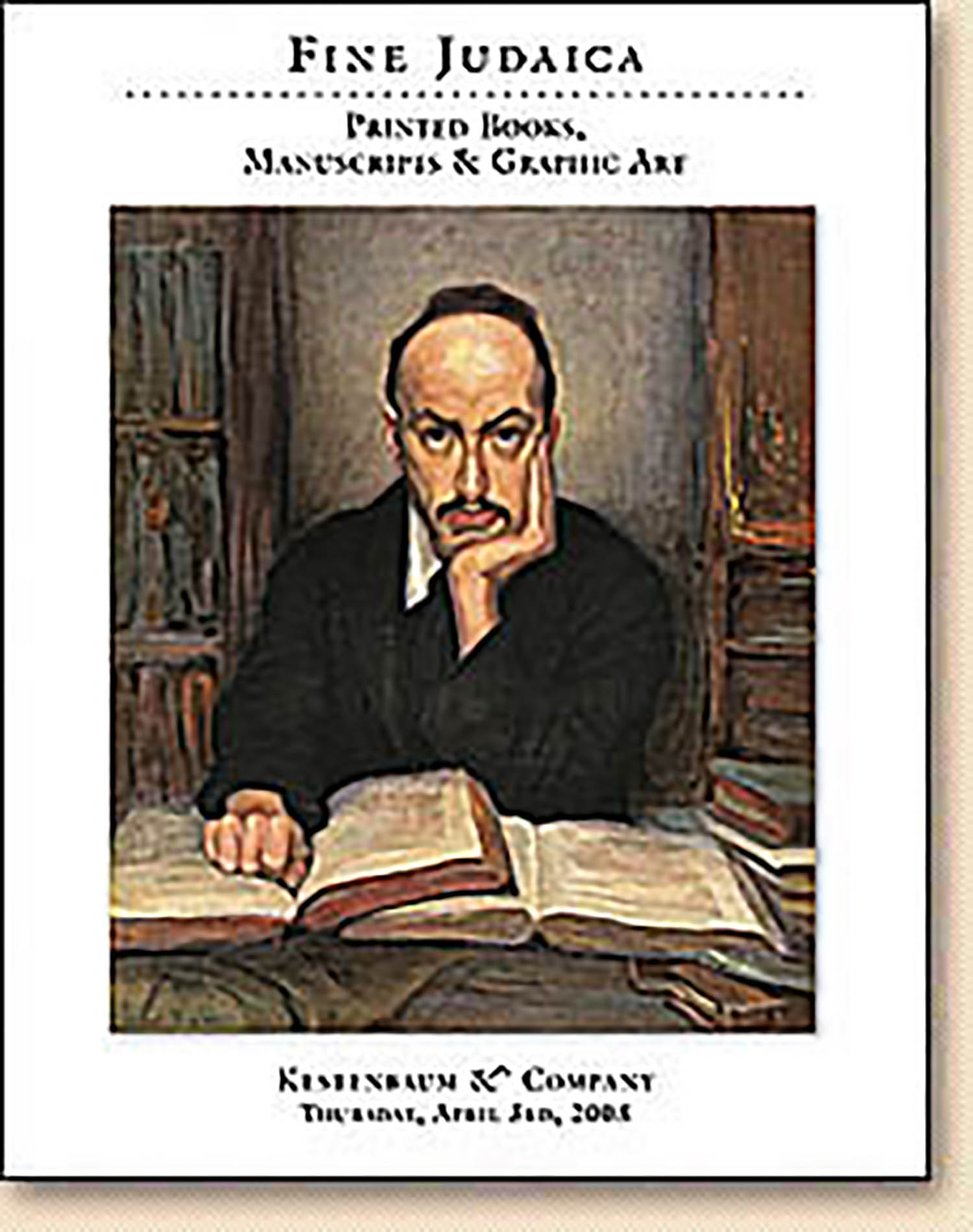MORTEIRA, SAUL HALEVI.

AUCTION 39 |
Thursday, April 03rd,
2008 at 1:00
Fine Judaica: Printed Books, Manuscripts, Autograph Letters & Graphic Art
Lot 342
MORTEIRA, SAUL HALEVI.
Amsterdam: 1705
Est: $10,000 - $15,000
PRICE REALIZED $31,000
A Regal Manuscript of Rabbi Saul Morteira's Magnum Opus: "Treatise on the Truth of the Law of Moses."
Saul Levi Morteira (ca.1596-1660) was born in Venice, where he studied under Leone (Judah Aryeh) Modena. He spent five years in Paris at the court of Queen Marie de Medici of France, as secretary to the Queen's personal physician, the Marrano Elijah Montalto. In 1616, Morteira accompanied Montalto's body to Amsterdam for Jewish burial. He would serve as the Rabbi of Amsterdam's Spanish-Portuguese community for the next forty-five years. Morteira's most celebrated student was the philosopher Benedict Spinoza, whom he would later excommunicate for his heretical views.
In 1645, disciples published a collection of Morteira's sermons under the title Giv'ath Sha'ul, containing an outline of 550 sermons. According to the introduction, his sermons by that year totaled 1400 - an average of 50 sermons per year.
The present text, Providencia de Dios con Israel [The Providence of God with Israel], was produced in the last year of Morteira's life. Consisting of 71 chapters, it falls roughly into two parts. Initially, Morteira sets out to trace the Divine Providence and numerous miracles that have allowed the Jewish People to survive through the ages, the work then offers a critique to Christianity.
Of historical importantce, the work contains an account of the events that befell the Jews who managed to escape from Brazil to New Netherlands, when Recife (Pernambuco), the last stronghold of the Dutch, fell to the Portuguese in January 1654. Twenty-three of these refugees from Recife, who arrived in New Amsterdam (today New York) in September of that year, aboard the French privateer St. Catherine, formed the nucleus of the Jewish community of New Amsterdam, over the protests of the Governor Peter Stuyvesant. We read in Chapter 11 of this manuscript:
"The last years, Blessed God demonstrated His immense providence with revealed miracles to us. Touching to the soul, it is notorious what succeeded when Brazil was [re]taken by the Portuguese, enemies of the Judaic name, and in particular of those forced to become Christians [i.e. Marranos], accustomed to cruel autos da fé…The Portuguese army was composed of Negro, Mulatto and Mamluke soldiers - poor, hungry, barefoot, and desirous of bettering their fortune with the substance of a nation odious to them. The Almighty King, with His infinite power, saved His people from such eminent danger, imbuing the spirit of the Governor Barreto with such pretexts that he commanded upon grave penalties that no one touch or molest any person of the Hebrew nation. Not only this, he also consented that they - more than six hundred persons - sell off their merchandise and embark for Holland. As there were lacking Dutch vessels, he gave them Portuguese vessels. They embarked in sixteen boats, entirely free. The Lord saved them from all - for when one of these ships was seized by the Spaniards, who would have conveyed the poor Jews to the Inquisition, the Lord presented them with a French ship, which took them back, and brought them providentially to Florida (or New Netherlands), from where they went in peace to Holland. Enough to say: All arrived well. The Lord spared their souls and their consciences from the cruel hand" (pp. 30-31).
Concerning the flight of the Jews from Brazil to New Netherlands, see M. Saperstein, Exile in Amsterdam, p. 103; JE, Vol. III, pp. 359-361; Vol. IX, p. 259; EJ, Vol. IV, col. 1324; Vol. XII, col. 1062; P. Bernardini and N. Fiering (eds.), The Jews and the Expansion of Europe to the West (2001), p. 377.
The remainder of the manuscript subjects Christianity to rigorous criticism, from the New Testament right up to contemporary Calvinism. In the words of Prof. Herman Prins Salomon: "It is the most extensive and comprehensive work produced before 1659 by a Jewish author about all forms of Christian dogma; the first critical analysis of the New Testament in a vernacular." In fact, several chapters attack the doctrine of John Calvin. In the final chapters of the book, Morteira argues that it would be better for non-Jews to adopt the Seven Laws of Noah, rather than Calvinism.
Due to these anti-Calvinist passages, it is understandable why Protestant Holland was not a suitable place to publish the manuscript. Though this work, along with several others of Morteira, remained unpublished until recent times, the very fact that it circulated widely in manuscript bespeaks the fact that it exerted a profound influence upon Sephardic thought.
In 1988, a facsimile edition of Morteira's autograph copy preserved in the Ets Haim Library, Amsterdam, was issued by the University of Coimbra, Portugal, with introduction and commentary by H.P. Salomon: Tratado da Verdade da Lei de Moisés - Escrito pelo seu próprio punho em portugues em Amesterdao 1659-1660. In that same year, Prof. Salomon made available a Dutch translation, Traktaat betreffende de waarheid van de wet van Mozes (Braga, Portugal 1988). Morteira wrote the original in Portuguese. Chacham Moses Raphael de Aguilar translated the work into Spanish under the title, Providencia de Dios con Israel, Verdad de la Ley de Moseh, y Nulidad de la.
Between the years 1662-1664, five manuscript copies were produced by the expert calligrapher Luis Nunes Dovale ("Jehudah Machabeu").
See Marc Saperstein, Jewish Preaching 1200-1800 (1989), pp. 270-271; idem, Exile in Amsterdam: Saul Levi Morteira's Sermons to a Congregation of "New Jews" (2005); H. Liberman, "Sepher Giv'ath Sha'ul," Sinai 37(1973):389-93; idem, Ohel Rachel, Vol. I (1980), pp. 304-309; EJ, Vol. XII, col. 355.
The scribe, Abraham Machorro was highly praised by Daniel De Barrios as one skilled equally in the use of the flute and the pen. He was a member of the Amsterdam society Temimei Derech. See JE, Vol. VIII, p. 247
